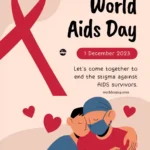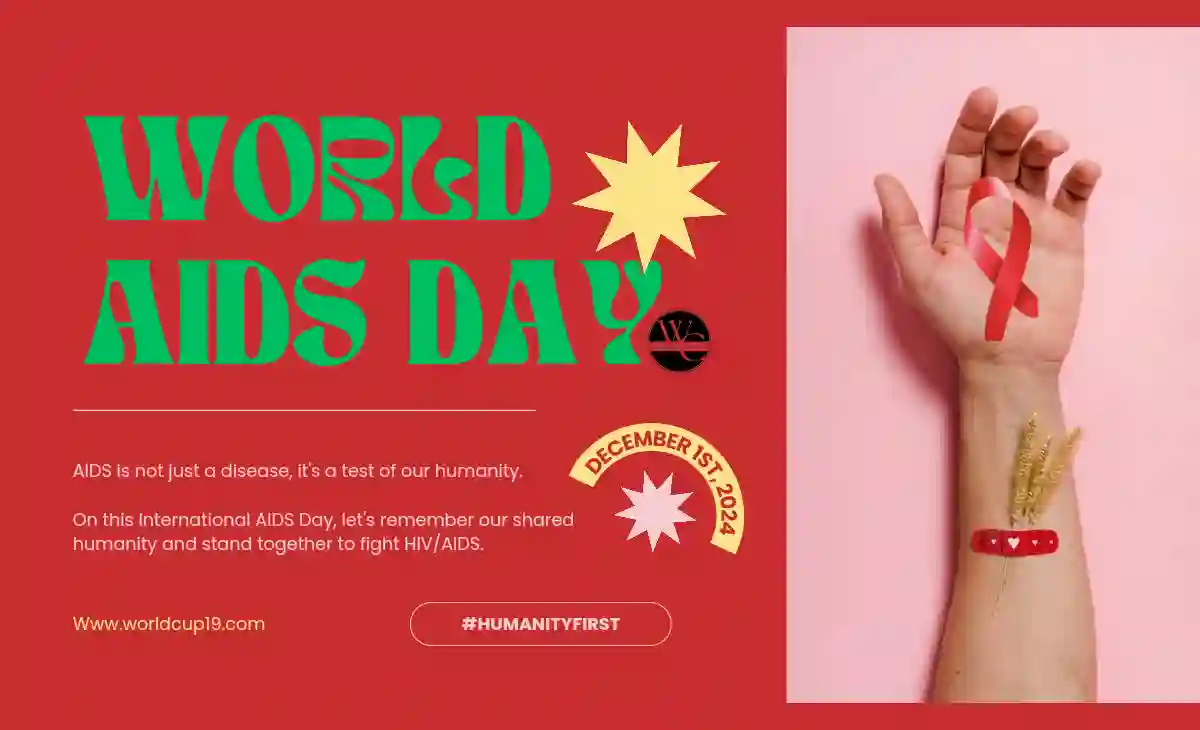As we come together on December 1st to observe World AIDS Day, it’s not just a day on the calendar; it’s a powerful reminder of solidarity, compassion, and the ongoing fight against HIV/AIDS. In this blog post, we’ll delve into the significance of World AIDS Day, the progress made, and the importance of continuing our collective efforts.
International Men’s Day: A Tribute to Men’s Well-being
World AIDS Day : A Call to Action to End the HIV/AIDS Epidemic
World AIDS Day, observed annually as a global call to action to raise awareness about HIV/AIDS and to combat the stigma and discrimination associated with the disease. This year’s theme, “Putting communities at the center,“ emphasizes the crucial role of communities in preventing and responding to HIV/AIDS.
The Journey of World AIDS Day
World AIDS Day, established in 1988, serves as a global opportunity to raise awareness, commemorate those we’ve lost, and show support for those living with HIV. Over the years, it has evolved from a day of mourning to a day of empowerment, education, and advocacy.
The Human Stories:
Behind the statistics and medical advancements lie countless human stories. World AIDS Day is a time to amplify these voices, sharing stories of resilience, courage, and triumph. It’s an opportunity to challenge stigma and discrimination, fostering a world where everyone affected by HIV/AIDS feels supported and understood.
World Aids Day :Progress and Challenges
While we’ve made significant strides in the fight against HIV/AIDS, there’s still work to be done. Advances in treatment and prevention have transformed the landscape, but access to these resources remains unequal. World AIDS Day is a call to action, urging us to address disparities and ensure that no one is left behind.
World Toilet Day: A Call to Action for Global Sanitation
The Latest Trends in HIV/AIDS Research and Treatment

Despite significant progress in HIV/AIDS research and treatment, the epidemic continues to pose a major public health challenge. According to the World Health Organization (WHO), there were approximately 37.7 million people living with HIV worldwide in 2021, and 1.5 million people died from AIDS-related illnesses.
Several recent trends in HIV/AIDS research and treatment offer hope for the future. These include:
The development of new antiretroviral drugs that are more effective and less toxic
The increased availability of pre-exposure prophylaxis (PrEP), which can prevent HIV infection in uninfected people
The expansion of access to HIV testing and treatment services
HIV (Human Immunodeficiency Virus)
HIV (Human Immunodeficiency Virus) is primarily transmitted through unprotected sexual intercourse, sharing of contaminated needles, and from an infected mother to her child during childbirth or breastfeeding. The virus attacks the immune system, specifically CD4 cells (T cells), weakening the body’s ability to fight off infections and diseases. Early symptoms may include flu-like symptoms, but HIV can remain asymptomatic for years. Regular testing, safe practices, and antiretroviral therapy can help manage the virus and slow its progression to AIDS (Acquired Immunodeficiency Syndrome).
Community Engagement:
Previous year’s theme, “End inequalities. End AIDS. End pandemics,” encourages us to reflect on the interconnectedness of health and social justice. By engaging communities, sharing knowledge, and promoting inclusivity, we move closer to a world without AIDS. Small acts, when multiplied, can bring about significant change.
The Importance of Community Engagement
Communities have always been at the forefront of the HIV/AIDS response, providing essential support and services to people living with HIV and affected communities. This year’s World AIDS Day theme highlights the importance of empowering communities to lead the fight against HIV/AIDS.
World Tsunami Awareness Day: Theme History and Importance
The Role of Education:
Education is a powerful tool in the fight against HIV/AIDS. Use this World AIDS Day to educate yourself and others. Understand the importance of regular testing, the significance of treatment adherence, and the impact of stigma on individuals and communities. By fostering understanding, we contribute to a more compassionate and informed society.
Communities can play a vital role in:
Preventing HIV infection by promoting safe sex practices and advocating for access to PrEP
Providing support and services to people living with HIV, including access to healthcare, social services, and housing
Combating stigma and discrimination associated with HIV/AIDS
What You Can Do to Make a Difference
Whether it’s volunteering at a local organization, supporting HIV/AIDS research, or simply spreading awareness on social media, each of us has a role to play. On this World AIDS Day, consider how you can make a positive impact, no matter how small.
Pele| The Magical King of Football| Black Pearl
Everyone has a role to play in ending the HIV/AIDS epidemic. Here are 5 Most important things you can do to make a difference:
- Get tested for HIV
- Learn about HIV prevention and transmission
- Talk to your friends and family about HIV/AIDS
- Donate to organizations that support people living with HIV
- Advocate for policies that promote HIV prevention and treatment
The choice of December 1st as World AIDS Day dates back to 1988 when the day was first observed. The date was selected to honor the creation of the World Health Organization’s (WHO) Global Program on AIDS. World AIDS Day provides an annual opportunity to unite people worldwide in the fight against HIV, to show support for those living with HIV, and to remember those who have died. World AIDS Day is observed on December 1st every year to raise awareness about the HIV/AIDS pandemic and to show support for people living with HIV/AIDS. It is an opportunity to commemorate those who have died from AIDS-related illnesses and to reflect on the global efforts to combat the spread of HIV. World AIDS Day, observed annually as a global call to action to raise awareness about HIV/AIDS and to combat the stigma and discrimination associated with the disease. This year’s theme, “Putting communities at the center,” or “Let Communities lead” emphasizes the crucial role of communities in preventing and responding to HIV/AIDS. Full form of aids is Acquired Immunodeficiency Syndrome. Red ribbon symbolizes our shared commitment, let’s wear it proudly and stand together in the fight against HIV/AIDS. Together, we can create a world where HIV is no longer a threat to public health.Why 1st December is celebrated as World AIDS Day?
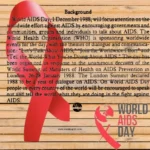
What is the purpose of the World AIDS Day?
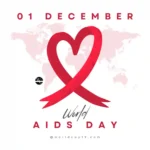
What is the Theme of World AIDS Day 2023?
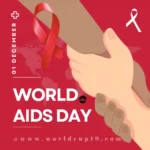
What is the full form of AIDS?
